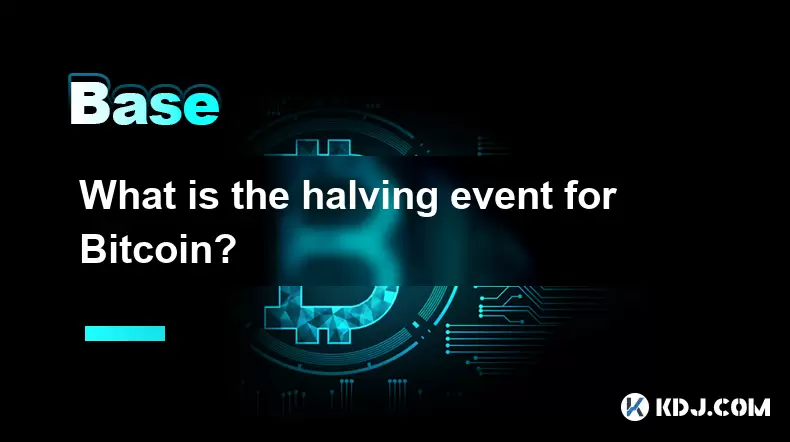-
 Bitcoin
Bitcoin $118400
0.39% -
 Ethereum
Ethereum $3814
2.17% -
 XRP
XRP $3.547
1.34% -
 Tether USDt
Tether USDt $1.000
0.00% -
 BNB
BNB $769.5
2.95% -
 Solana
Solana $191.7
6.36% -
 USDC
USDC $0.9999
0.01% -
 Dogecoin
Dogecoin $0.2722
7.75% -
 Cardano
Cardano $0.8995
5.59% -
 TRON
TRON $0.3158
-0.78% -
 Hyperliquid
Hyperliquid $47.37
4.46% -
 Stellar
Stellar $0.4848
3.54% -
 Sui
Sui $4.031
1.72% -
 Chainlink
Chainlink $20.11
3.94% -
 Hedera
Hedera $0.2832
3.16% -
 Avalanche
Avalanche $26.20
4.27% -
 Bitcoin Cash
Bitcoin Cash $530.5
0.67% -
 Shiba Inu
Shiba Inu $0.00001568
3.59% -
 Litecoin
Litecoin $118.4
1.42% -
 UNUS SED LEO
UNUS SED LEO $8.976
-0.23% -
 Toncoin
Toncoin $3.349
2.54% -
 Polkadot
Polkadot $4.590
2.54% -
 Uniswap
Uniswap $10.56
-0.59% -
 Ethena USDe
Ethena USDe $1.001
0.00% -
 Monero
Monero $327.7
0.39% -
 Pepe
Pepe $0.00001422
2.62% -
 Bitget Token
Bitget Token $4.973
-1.22% -
 Dai
Dai $1.000
0.02% -
 Aave
Aave $331.9
1.59% -
 Bittensor
Bittensor $429.6
-0.56%
What is the halving event for Bitcoin?
The Bitcoin halving, occurring every 210,000 blocks, reduces miner rewards and limits Bitcoin’s supply, influencing market dynamics and miner profitability.
Jul 21, 2025 at 02:28 pm

Understanding the Bitcoin Halving Mechanism
The Bitcoin halving event is a pre-programmed reduction in the reward given to miners for validating new blocks on the blockchain. This event occurs approximately every 210,000 blocks, which translates to roughly every four years. The halving is embedded in Bitcoin’s source code and plays a central role in controlling the supply of new bitcoins entering circulation.
Each time a halving occurs, the block reward that miners receive is cut in half. For example, when Bitcoin first launched in 2009, miners received 50 BTC per block. After the first halving in 2012, this reward dropped to 25 BTC per block. Subsequent halvings occurred in 2016 and 2020, reducing the reward to 12.5 BTC and then to 6.25 BTC, respectively.
This mechanism is crucial because it ensures that the total supply of Bitcoin will never exceed 21 million coins, a hard cap that contributes to its scarcity-driven value proposition.
Why Bitcoin Halving Matters
The halving event significantly affects the supply side of Bitcoin. Since the rate at which new coins are created slows down, the overall inflation rate of Bitcoin decreases. This scarcity can influence market dynamics, potentially leading to price increases if demand remains constant or grows.
Historically, Bitcoin has experienced notable price movements following halving events. While past performance does not guarantee future results, many investors and analysts closely watch these events for trading and investment opportunities. The reduced block reward also affects mining profitability, sometimes leading to centralization risks if smaller miners are forced out due to lower rewards.
How the Bitcoin Halving is Executed
The halving is not manually triggered or controlled by any central authority. Instead, it is automatically executed by the Bitcoin protocol once the network reaches the required number of blocks. Here's how it works:
- The Bitcoin network tracks the number of blocks mined.
- Every 210,000 blocks, the system checks whether a halving is due.
- If so, the block reward is halved automatically in the next block.
This process is transparent and verifiable by anyone running a full node. Developers and miners do not have control over the timing or execution of the halving—it is purely algorithmic.
Impact on Miners After a Halving
Miners are directly affected by the reduction in block rewards. Since mining requires significant investment in hardware and electricity, a halving can reduce profitability, especially for those with higher operational costs.
Miners may respond in several ways:
- Upgrade mining equipment to increase efficiency and reduce electricity costs.
- Join mining pools to share rewards and stabilize income.
- Relocate operations to regions with cheaper electricity.
- Exit the mining industry if profitability becomes unsustainable.
Despite these challenges, miners can also benefit from rising Bitcoin prices post-halving, which may offset the reduced block reward.
Market Reactions to Previous Halvings
Historically, Bitcoin has seen notable price volatility around halving events. The 2012 halving saw Bitcoin rise from around $12 to over $1,000 within a year. The 2016 halving was followed by a bull run that peaked in late 2017 at nearly $20,000. The 2020 halving preceded a massive rally that pushed Bitcoin to over $60,000 in 2021.
It is important to note that while halvings can influence market sentiment, they are not the sole drivers of Bitcoin's price. Other factors such as adoption, regulation, macroeconomic trends, and investor behavior play significant roles.
Tracking the Next Bitcoin Halving
The next Bitcoin halving is expected to occur around April 2024, when the block reward will drop from 6.25 BTC to 3.125 BTC per block. You can track the countdown using:
- Bitcoin block explorers like blockchair.com or blockchain.com.
- Dedicated halving countdown websites such as bitcoinblockhalf.com.
- Monitoring the Bitcoin blockchain through a full node or wallet.
The exact block at which the halving occurs is determined by the network, not by a specific date, so the timing may vary slightly depending on block confirmation speed.
Frequently Asked Questions
Q: Does the Bitcoin halving affect transaction fees?
No, the halving only affects the block reward given to miners, not the transaction fees paid by users. However, as block rewards decrease, miners may rely more heavily on transaction fees for revenue sustainability.
Q: Can the Bitcoin halving be delayed or canceled?
No, the halving is hardcoded into Bitcoin’s protocol and cannot be delayed or canceled without a hard fork. Achieving consensus for such a change would be extremely unlikely due to Bitcoin’s decentralized nature.
Q: How many more Bitcoin halvings will there be?
There will be 32 total halvings before the block reward reaches zero. The last halving is expected to occur around the year 2140, after which miners will only earn revenue from transaction fees.
Q: What happens if Bitcoin’s price doesn’t rise after a halving?
If the price remains flat or falls, some miners may become unprofitable and shut down operations. This could temporarily reduce the network’s hash rate, but the difficulty adjustment mechanism will compensate to maintain block production time.
Disclaimer:info@kdj.com
The information provided is not trading advice. kdj.com does not assume any responsibility for any investments made based on the information provided in this article. Cryptocurrencies are highly volatile and it is highly recommended that you invest with caution after thorough research!
If you believe that the content used on this website infringes your copyright, please contact us immediately (info@kdj.com) and we will delete it promptly.
- Crypto Stocks, Stablecoin Law & Trump: A New Era?
- 2025-07-22 02:30:12
- Kaito, Web3, and Crowdfunding: A New Era of Capital Alignment?
- 2025-07-22 02:30:12
- Saylor, Trump, and Bitcoin: A New York Minute on Crypto's Power Trio
- 2025-07-22 00:50:12
- Strategy, Bitcoin, and $122,000: A New York Minute on Crypto's Latest Moves
- 2025-07-22 00:50:12
- Dogecoin Price Prediction: Will the Pump Continue?
- 2025-07-22 01:50:12
- AVAX Price, Mining Rewards, and PI Price: What's the Buzz?
- 2025-07-22 01:50:12
Related knowledge

What is the difference between CeFi and DeFi?
Jul 22,2025 at 12:28am
Understanding CeFi and DeFiIn the world of cryptocurrency, CeFi (Centralized Finance) and DeFi (Decentralized Finance) represent two distinct financia...

What is the difference between a sidechain and a Layer 2?
Jul 20,2025 at 11:35pm
Understanding the Concept of SidechainsA sidechain is a separate blockchain that runs parallel to the main blockchain, typically the mainnet of a cryp...

What is the Inter-Blockchain Communication Protocol (IBC)?
Jul 19,2025 at 10:43am
Understanding the Inter-Blockchain Communication Protocol (IBC)The Inter-Blockchain Communication Protocol (IBC) is a cross-chain communication protoc...

How does sharding improve scalability?
Jul 20,2025 at 01:21am
Understanding Sharding in BlockchainSharding is a database partitioning technique that is increasingly being adopted in blockchain technology to enhan...

What is the "crypto trilemma" of scalability, security, and decentralization?
Jul 19,2025 at 06:28pm
Understanding the Concept of the Crypto TrilemmaThe crypto trilemma refers to the challenge of simultaneously achieving scalability, security, and dec...

What is a cliff and vesting schedule in tokenomics?
Jul 20,2025 at 10:28am
What Does a Cliff Mean in Tokenomics?In tokenomics, a cliff refers to a specific period during which token holders are not allowed to access or transf...

What is the difference between CeFi and DeFi?
Jul 22,2025 at 12:28am
Understanding CeFi and DeFiIn the world of cryptocurrency, CeFi (Centralized Finance) and DeFi (Decentralized Finance) represent two distinct financia...

What is the difference between a sidechain and a Layer 2?
Jul 20,2025 at 11:35pm
Understanding the Concept of SidechainsA sidechain is a separate blockchain that runs parallel to the main blockchain, typically the mainnet of a cryp...

What is the Inter-Blockchain Communication Protocol (IBC)?
Jul 19,2025 at 10:43am
Understanding the Inter-Blockchain Communication Protocol (IBC)The Inter-Blockchain Communication Protocol (IBC) is a cross-chain communication protoc...

How does sharding improve scalability?
Jul 20,2025 at 01:21am
Understanding Sharding in BlockchainSharding is a database partitioning technique that is increasingly being adopted in blockchain technology to enhan...

What is the "crypto trilemma" of scalability, security, and decentralization?
Jul 19,2025 at 06:28pm
Understanding the Concept of the Crypto TrilemmaThe crypto trilemma refers to the challenge of simultaneously achieving scalability, security, and dec...

What is a cliff and vesting schedule in tokenomics?
Jul 20,2025 at 10:28am
What Does a Cliff Mean in Tokenomics?In tokenomics, a cliff refers to a specific period during which token holders are not allowed to access or transf...
See all articles

























































































